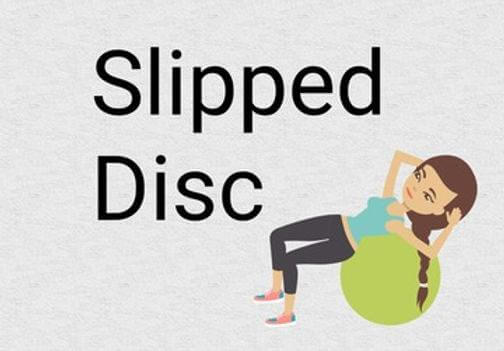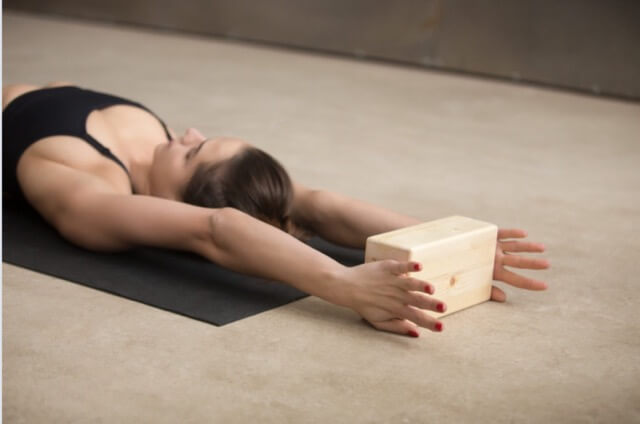Author: Randeep Singh / go to all articles on Yoga cure
Yoga for slipped disc –
The spine in general is supported by a group of muscles, the muscles which help in bending the spine forward are known as flexors, and are powerful shock absorbers.
In order to keep the spine strong and healthy, one must properly understand and become aware of the how to keep the balance, between the different forces which act upon the spine; contraction, relaxation, and stretching.
Discs are soft circular structures filled with fluid for providing cushioning between the two adjoining vertebrae.
Slipped disc is one of the problems associated with it, yoga for slipped disc help treat this issue.
The problems related to the discs have their genesis in wrong posture, advancing age, bad coordination between the muscles groups around the spine, and loss of fluid leading to poor shock absorption.
Discs present between all the 33 vertebrae of the spine along with the musculature around the spine act as the apparatus for absorbing shocks. Poor muscle tone and muscle harmony lead to excessive pressure onto the discs which causes disc related issues.
The spine experiences natural degeneration with age; persons between the age groups from 15 to 45 years experience radial and circumferential tears, dysfunction, herniation or prolapse of the discs, The disc experiences internal disruption and resorption disc bulges, herniation or prolapse between the ages of 35 to 70 years, and persons above 60 years of age experience bony outgrowths or osteophytes, and the enlargement of facets.
The effects of all these three stages may overlap and co-exist at different segments of the spine.
Slipped disc is almost always wrongly understood as a disc that has slipped away, and needs to be placed back. In reality presence of all or some of the wrong inputs to the spine along with age related degeneration induce certain internal changes in the disc.
Due to which even the slightest of wrongly directed force (sneezing, bending, lifting) pushes the ingredients of the disc out of its boundary in into a visible bulge. This bulge, or herniation in the disc press upon the nearby nerve irritating them in the process. In response, the muscles connected to these nerves go into spasms as a protective measure.
Sometimes the location of the herniated disc, prolapsed disc is such (lumbar spine) that it pinches upon the nerves which radiate down the length of the legs causing discomfort in the lower extremities.
The first symptom of a slipped disc is severe back pain with or without radiation to a certain area of the body. Sciatica pain is an example of the same where the herniated portion of the disc pinches upon the Sciatica nerve which runs along the entire length of both the legs.
Next simple movements like sitting, standing and walking will aggravate the pain. Once the person lies down, the pain seems to disappear. Depending on the level of pressure on the nerve a sense of numbness is experienced in the body regions to which the affected nerve is serving.

How to treat Slipped Disc?
Many a times a herniated disc is the result of a bad posture, or sitting, bending, or standing the wrong way. Yoga techniques which help correct one’s posture can be effective exercises for slipped disc patients. A rectified posture puts the spine back into the healthy alignment, vertebral alignment, which takes off any misdirected pressure from upon the discs.
The posture ones corrected will also prevent any future relapse of the issues related to the spinal discs. Most of the slipped disc exercises include yoga asanas which strengthen the muscles of the abdomen; this relieves the lower spine off any extra strain it must be possibly undergoing while compensating for the weak abdominal muscles in holding the torso upright.
Moreover, practicing the yoga for slipped disc makes one aware of the various movements of the muscles in different regions of the body, this knowledge can help by making one conscious of, and habituate oneself to the movements which seem to be more natural and nonviolent to the body. Once the correct way to move the joints and other body parts is learnt one can keep the discs off any negative pressure which can prove detrimental to them in the long run.
Stiffness in the facet joints keeps the pressure on the discs at a certain single angle only, Yoga for slipped disc increases the flexibility of the spinal joints which help distribute the pressure on the spine, of carrying the weight of the body, evenly across the vertebrae and the intermediately placed discs. This aids to maintain the health of the individual discs for long.
It is generally believed that once the cushion providing liquid is squeezed out of the disc leading to the herniated disc, or prolapsed disc condition can never be replaced, but experienced yoga teachers who have provided bulging disc treatment to the afflicted have maintained that with the regular and focused practice of yoga for slipped disc the lost liquid filling of the disc can get reabsorbed into it. Complete bed rest for a few weeks can resolve the slipped disk condition on its own in a number of cases.
Techniques for healing Bulging Disc
Other Informative Articles….

